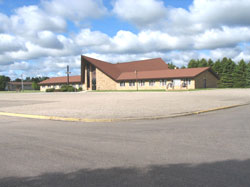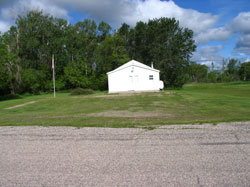Edinburg and the surrounding communities have long been shaped by the presence of local churches. These congregations have not only served as places of worship but also played a vital role in the town’s social and cultural fabric. While some churches continue to hold services, others are remembered as significant chapters in the area’s religious history.
Grace Free Lutheran Church
Established: 1987
Grace Free Lutheran Church began serving the community in the late 20th century. Since its founding, the church has provided worship services, supported outreach programs, and remained active in Edinburg’s spiritual life.

Trinity Lutheran Church
Established: 1882
Trinity Lutheran Church stands as one of Edinburg’s earliest religious institutions. Founded in 1882, it has adapted to over a century of change while maintaining its central role in the community as a place of worship and gathering.

Church of God of the Firstborn
Established: 1949
The Church of God of the First Born opened its doors in 1949 and quickly became a spiritual home for many families in the area. As years passed, membership declined when many original members either moved away or joined other congregations. After the passing of longtime pastor Walter Wellman, the church closed, and the building was removed. Despite its absence today, the church holds historical significance in Edinburgh’s religious story.

Odalen Lutheran Church
In 1884, early settlers—many from the Odalen Parish in Norway—established Odalen Lutheran Church. They named it the Odalen Norwegian Lutheran Church, honoring their cultural and spiritual roots. For generations, the church served as a central place of worship and cultural identity for Norwegian-American families in the region.

The congregation held its final regular service in June 2000, marking the end of its active religious role. However, the community continued to gather at the site each May for Memorial Day services, keeping the tradition alive.
On Thursday, June 21, 2007, tragedy struck when a fire broke out around 7:30 p.m. The Edinburgh Fire Department arrived swiftly and made a valiant effort to save the historic building. Despite their determination, the flames overtook the structure. Known to many as the “Church by the Lake,” Odalen Lutheran Church had long offered a peaceful setting for worship and reflection. Although the building no longer stands, the memories it created remain deeply rooted in the lives of those who once worshipped there.
